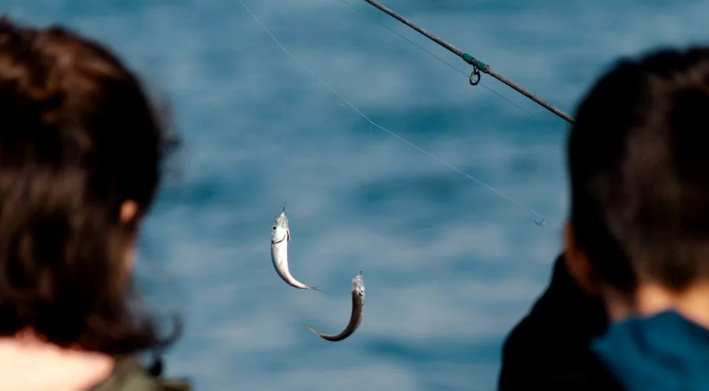Shipping frozen fish requires careful planning and proper techniques to ensure that the fish arrives at its destination in excellent condition. From choosing the right packaging materials to understanding shipping regulations, there are several steps to follow to ensure successful delivery. This guide will walk you through the entire process, providing detailed instructions and tips for shipping frozen fish effectively.

Step 1: Preparing the Fish
Cleaning and Filleting
Before shipping, ensure that the fish is properly cleaned and filleted. Remove all internal organs, scales, and any unwanted parts. Rinse the fish thoroughly with cold water to remove any blood or residues.
Freezing the Fish
Once the fish is cleaned, it’s crucial to freeze it immediately to preserve freshness. Lay the fish flat on a baking sheet and place it in the freezer. Once the fish is completely frozen, wrap it tightly in plastic wrap to prevent freezer burn. For best results, use vacuum-sealed bags to remove air and maintain the fish’s quality.
Step 2: Choosing the Right Packaging Materials
Insulated Containers
Select an insulated container designed for shipping perishable items. These containers typically have thick walls made of foam or other insulating materials to keep the fish cold during transit. Ensure the container is the appropriate size to accommodate the fish and any additional cooling materials.
Gel Packs or Dry Ice
To maintain the fish’s frozen state, use gel packs or dry ice as cooling agents. Gel packs are reusable and can keep the contents cold for an extended period. Dry ice, on the other hand, is extremely cold and can maintain freezing temperatures. However, handling dry ice requires caution and adherence to shipping regulations.
Waterproof Lining
Line the insulated container with a waterproof liner or plastic bag to prevent any leakage during shipping. This additional layer helps contain any melted ice or condensation, protecting the fish and the outer packaging.
Step 3: Packing the Fish
Layering the Fish and Gel Packs
Place the frozen fish in the insulated container, layering it with gel packs or dry ice. Ensure that the fish is surrounded on all sides by the cooling agents to maintain an even temperature. Avoid overpacking, as this can reduce the effectiveness of the cooling materials.
Sealing the Container
Once the fish and cooling agents are in place, securely seal the insulated container. Use strong tape to ensure that the lid stays closed during transit. Label the container clearly with the recipient’s address and contact information.
Step 4: Shipping the Fish
Choosing the Right Shipping Carrier
Select a reliable shipping carrier that specializes in handling perishable items. Look for carriers that offer expedited shipping options to minimize the time the fish spends in transit. Discuss your requirements with the carrier to ensure they can meet your shipping needs.
Understanding Shipping Regulations
Familiarize yourself with the shipping regulations for perishable items, especially if you’re shipping internationally. Different countries have varying rules regarding the importation of frozen fish, including restrictions on certain species and requirements for health certificates.
Scheduling the Shipment
Plan the shipment carefully to avoid delays. Ship the fish early in the week to prevent it from being held in a warehouse over the weekend. Ensure that the recipient is available to receive the package upon arrival to avoid any additional handling or storage time.
Step 5: Tracking and Monitoring
Using Tracking Services
Most shipping carriers offer tracking services that allow you to monitor the progress of your shipment. Use these services to stay informed about the location and status of your package. Provide the tracking number to the recipient so they can also monitor the shipment.
Communicating with the Recipient
Keep in touch with the recipient to ensure they are aware of the expected delivery date and time. Provide them with instructions on how to handle the package upon arrival, including the proper way to unpack and store the fish.
Step 6: Ensuring Safe Delivery
Inspecting the Package
Upon delivery, instruct the recipient to inspect the package immediately. They should check for any signs of damage or leakage. If any issues are found, contact the shipping carrier promptly to report the problem and seek resolution.
Storing the Fish
Once the fish is delivered, it should be transferred to a freezer or consumed immediately. Provide the recipient with guidelines on the proper storage of frozen fish to maintain its quality.
Tips for Successful Shipping
Proper Labeling
Always label the package with clear, concise information, including the contents and any special handling instructions. Labels such as “Keep Frozen” or “Perishable” can alert handlers to the nature of the shipment.
Insuring the Shipment
Consider insuring the shipment to protect against loss or damage. Insurance can provide peace of mind and financial protection in case of unforeseen circumstances during transit.
Maintaining Communication
Regular communication with the shipping carrier and recipient can help ensure a smooth shipping process. Promptly address any concerns or questions that arise to prevent delays or issues.
Conclusion
Shipping frozen fish involves several crucial steps, from preparing and packing the fish to selecting the right carrier and monitoring the shipment. By following these guidelines, you can ensure that your frozen fish arrives at its destination in perfect condition. Proper preparation, packaging, and communication are key to successful shipping, providing fresh and high-quality fish to your customers or recipients.



